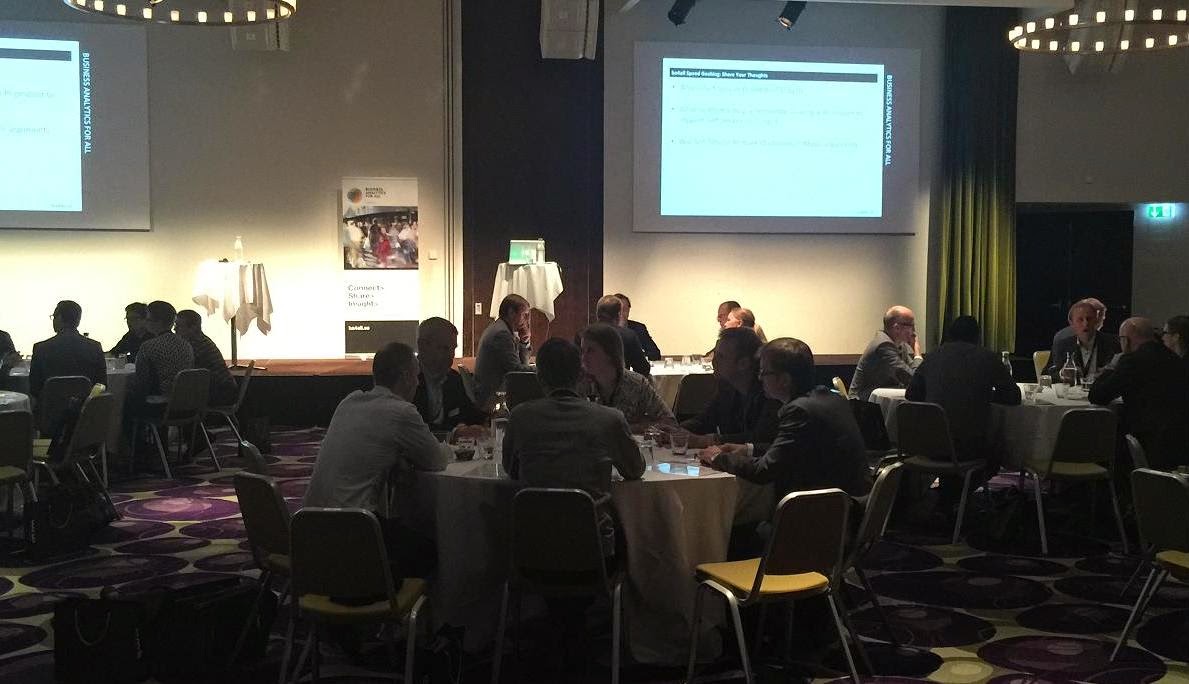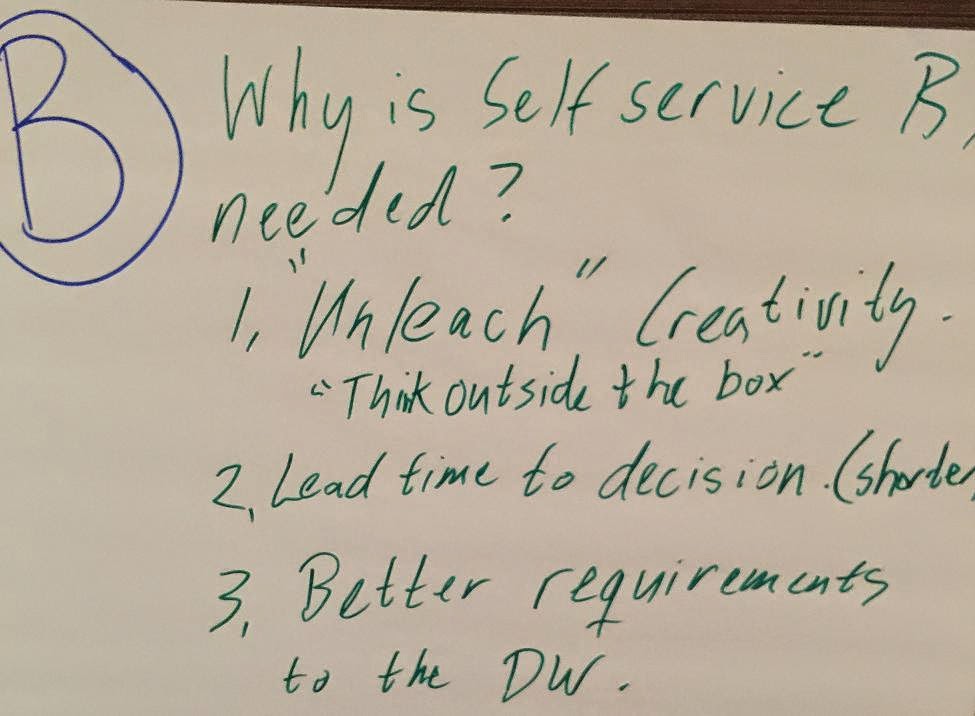The three theme questions discussed were:
- Why do you use SSBI?
- What are the major problems encountered?
- Will IT become obsolete? (a more challenging version of "How will SSBI affect IT's role")
Why organisations use SSBI
The problems SSBI can solve are low BI service levels, elicitating better requirements for the data warehouse as uses will see the gaps in the available data and providing a workaround for slow DWH/BI development tracks. But the majority of answers went in the direction of opening up new opportunities.The number one reason for SSBI is time to market: support faster decision making, explore the organisation's creativity better, enhance flexibility, innovation, exploration,.. it's all there. Some teams came up with deep thoughts about organisational development: "Distributes fact based decision making" was a very sharp one as well as "getting the right information to the right person at the right moment" although both motivations will need to be managed carefully. Because SSBI is not a matter of opening up the data warehouse (or other data lakes) to everybody, the paradox is that the more users are empowered, the more governance and data management are needed.
Conclusion: as always, two approaches to this question emerge: either it solves a problem or it creates an opportunity. My advice is to look for opportunities if you want a concept, a technology or a new business process to last. Because problem solvers will limit the new technology from the problem perspective which is a form of typecasting the technology whereas opportunity seekers will keep exploring the new possibilities of a technology.
What are the major problems encountered?
SSBI is not a walk in the park for neither IT nor the business users.Data quality management, as well as the related management of semantics and governance of master data are the principal bumps on the road. Lack of training is also high on the radar as well as performance and security and integrity. So far, no real surprises. But strangely enough, an issue like "usability" appeared. You'd think that this is the main reason of developing an SSBI platform but apparently it is also the main show stopper.
Conclusion: in this mixed audience of IT and business professionals I have noticed few defensive strategies. Yes, there are problems but they can be solved was the general mood I felt in the room. Maybe this is one of the reasons why Sweden is one of the most innovative societies in the world?
How will SSBI affect IT's role
There was a general consensus between the IT and the business professionals: IT will evolve into a new role when SSBI is introduced. They will develop a new ecosystem, optimise the infrastructure for SSBI and act as an enabler to advance the use of SSBI.Other interesting suggestions were pointing towards new IT profiles emerging in this ecosystem like data scientists, integrators of quality data, managers of business logic form both internal and external systems. In short, the borders between IT and the business users will become vaguer over time. But one remark was a bit less hopeful: one group concluded that the CIO is still far away from the business perspective.
Maybe that's because many CIOs come from the technology curriculum and there are still organisations out there that do not consider ICT as a strategic asset. Every day I praise myself lucky that I worked in a mail order company, early in my career. The strategic role of ICT was never questioned there and it was no surprise that the CIO of my company became the CEO as customer data, service level data, financial data and HRM data were considered as the core assets.



